#Aida overton walker
Photo


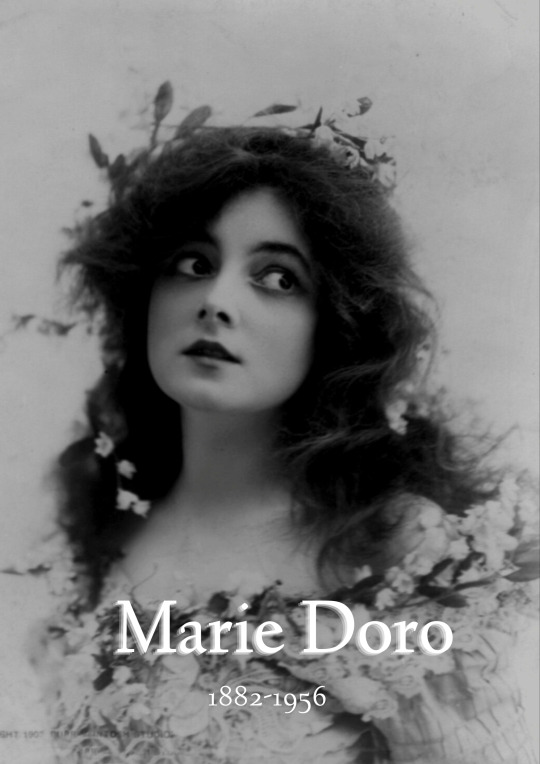
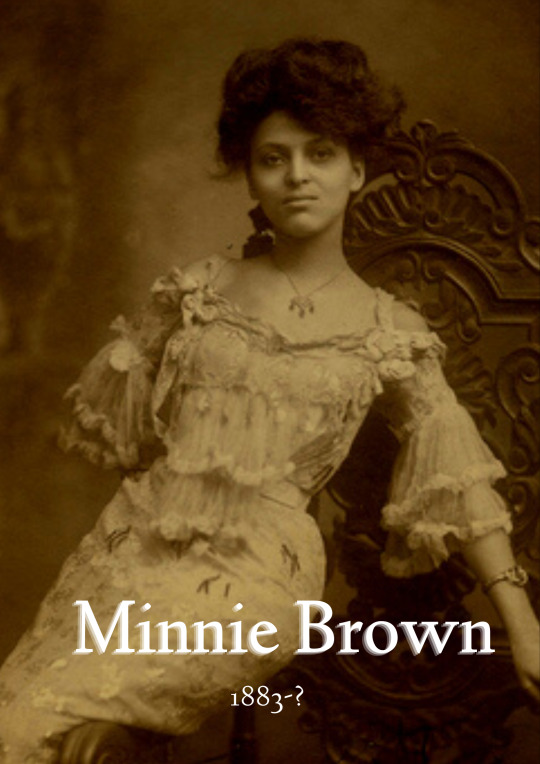





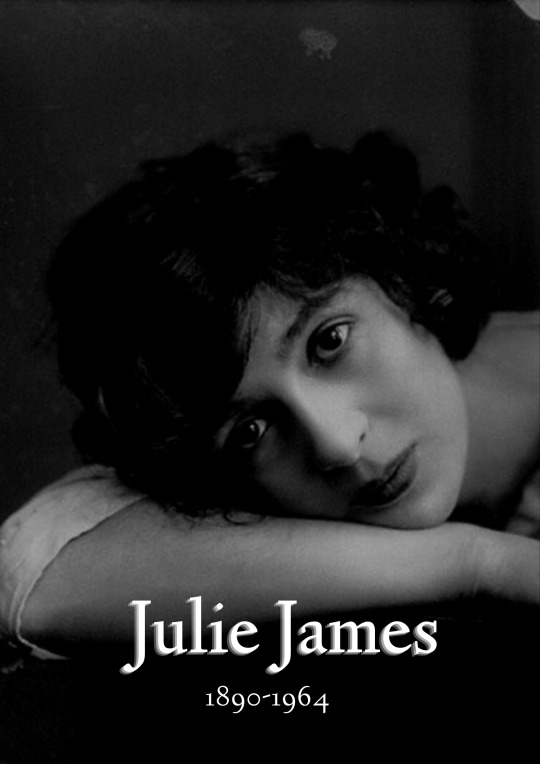
edwardian era women
#history#vintage#edwardian era#lily elsie#gladys cooper#marie doro#minnie brown#maude fealy#aida overton walker#ethel warwick#evelyn nesbit#ethel clayton#julie james#ph#photography#women in history
1K notes
·
View notes
Text

Lady of The Day 🌹 Aida Overton Walker ❤️
18 notes
·
View notes
Photo
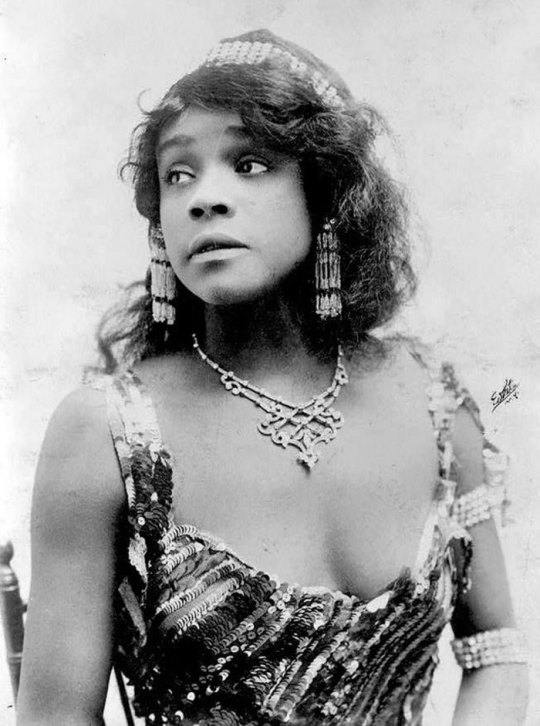
Aida Overton Walker (1880-1914), aka "The Queen of the Cakewalk", was an African-American vaudeville performer, actress, singer, dancer, choreographer, and wife of vaudevillian George Walker. She appeared with her husband and his performing partner Bert Williams, and in groups such as Black Patti's Troubadours. She was also a solo dancer and choreographer for vaudeville shows such as Bob Cole, Joe Jordan, and J. Rosamond Johnson's The Red Moon (1908) and S. H. Dudley's His Honor the Barber (1911).
27 notes
·
View notes
Photo
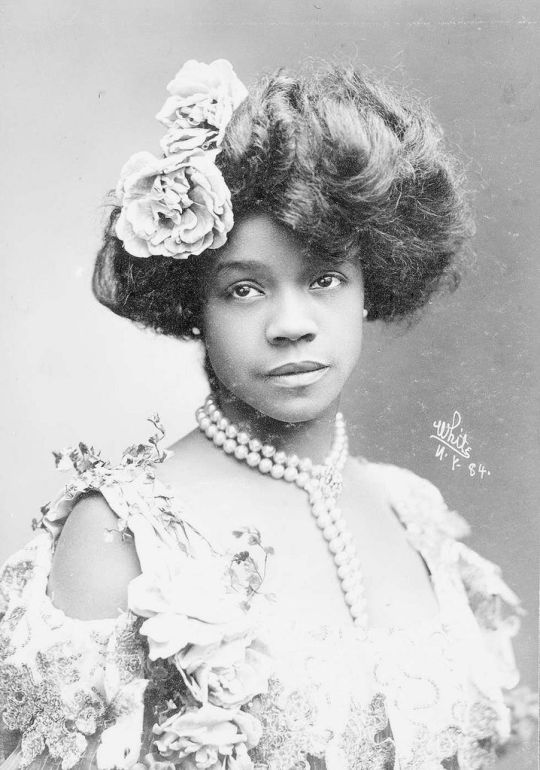


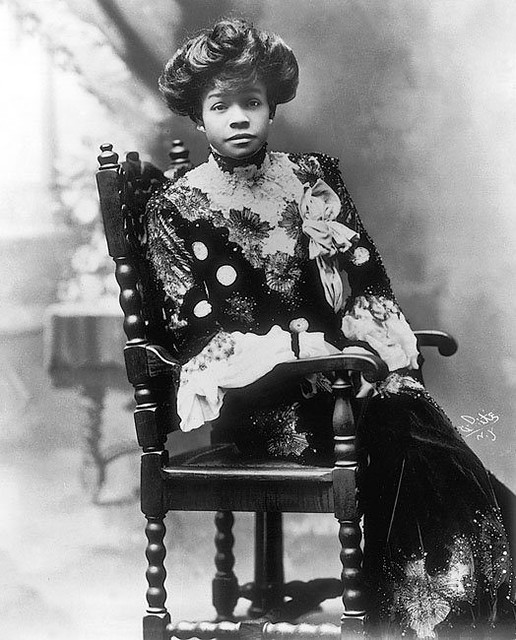
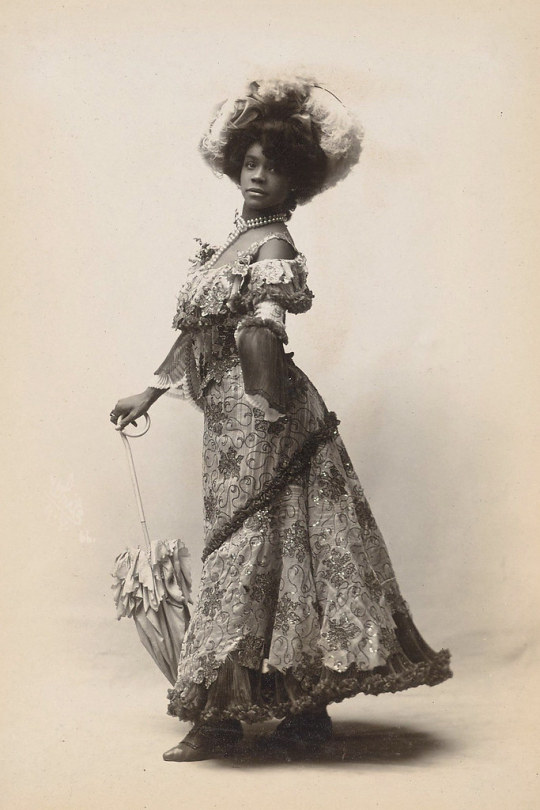

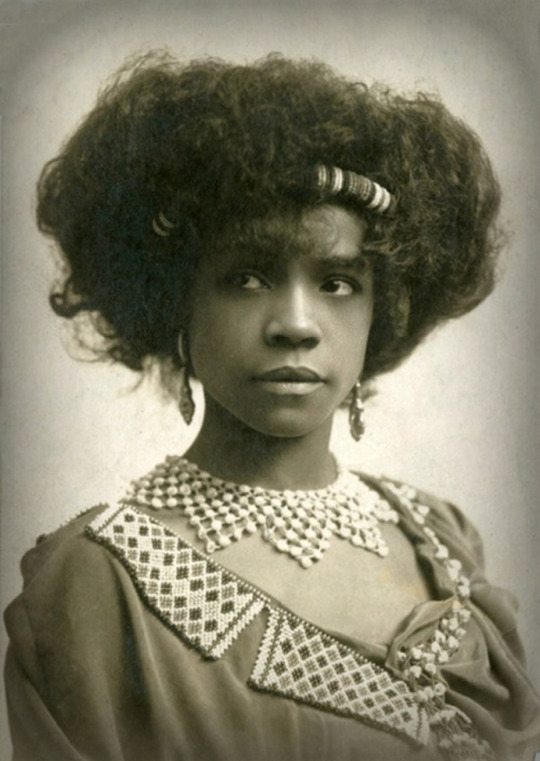

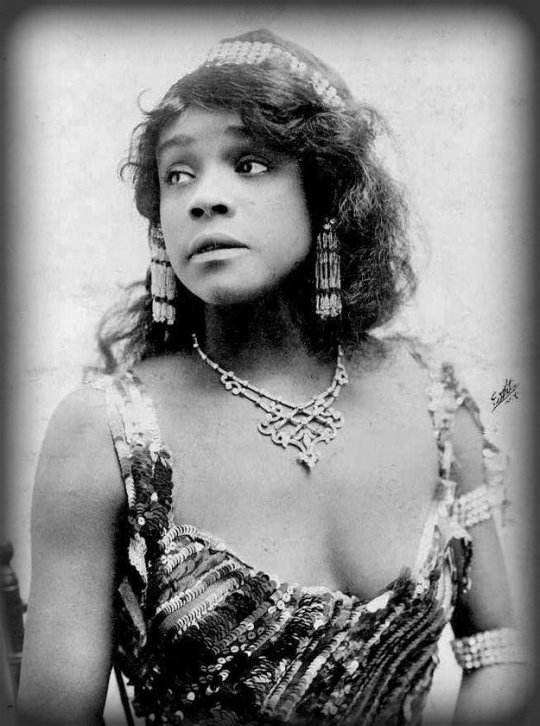
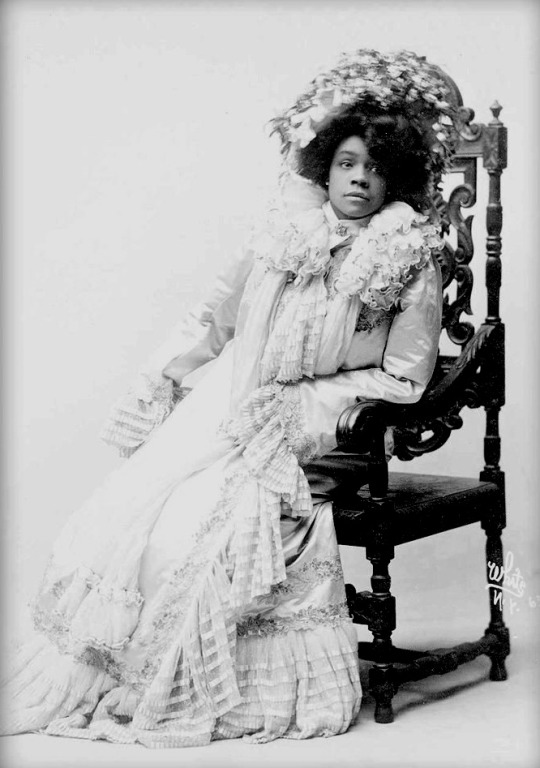
Aida Overton Walker, “The Queen of the Cakewalk”
Portraits taken in the early 1900s.
Aida was a choreographer, dancer, singer, vaudeville performer and actress. One thing you were not gon get her to agree to do was perform racial stereotypes of Black Americans onstage. Absolutely not. You were just gon let her impress and do what she do. Although she had a short life, passing away at age 34 to kidney failure in 1914, she would inspire and pave the way for acts like Josephine Baker and Florence Mills to do their thang.
”Unless we learn the lesson of self-appreciation and practice it, we shall spend our lives imitating other people and deprecating ourselves.” —Aida
84 notes
·
View notes
Photo



Reminder that Miss Medda is loosely based off of Aida Overton Walker! African American Vaudeville performer that did a lot of work to help young black women get on the stage. She refused the stereotypical “mammy” role that was often placed upon black women and became a sensational star, even going on to perform in Buckingham palace for King Edvard VII.
#police were literally sent to her show due to complaints about the performers showing their bare legs#'she got no clothes on!!'#miss medda larkin#miss medda#newsies#newsies musical#newsies history
266 notes
·
View notes
Text
I wrote this poem exclusively for my Root Beer patrons (20$). I wrote it thinking of Aida Overton Walker, the "Queen of Cakewalk", choreographer, dancer, actress, singer, who was a legendary performer and an imprint in the history of Black performance. She was a sublime artist, and she eargely championed Black women getting on the stage and exercising their skills and artistry. And so the title is a parallel of her voice.


Archival photographs of Aida Overton Walker, The "Queen of Cakewalk", Queen of The Vaudeville Circuit, dancer, singer, choreographer, actress

Abbey Lincoln was a jazz vocalist and songwriter.
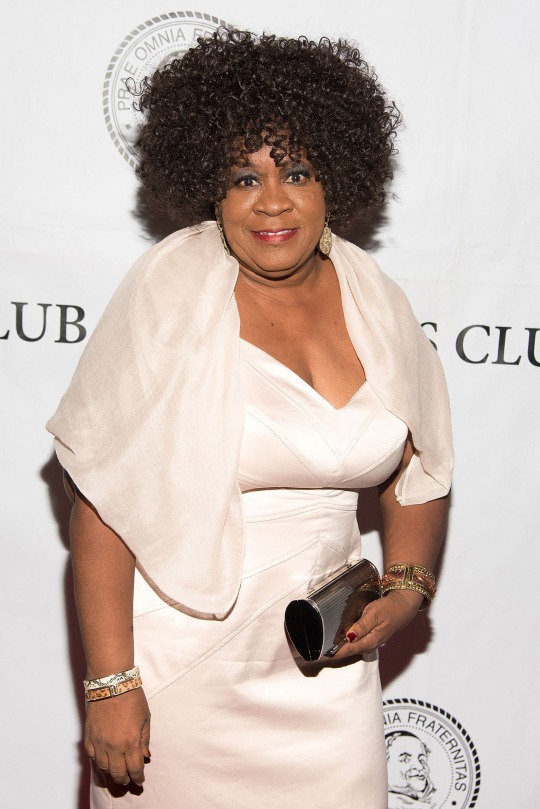
Bobby Humphrey is a flutist and singer. Her works have been sampled by the like of Digable Planets, Eric B & Rakim, Ludacris.

Megan Thee Stallion is a rapper, performer, dancer, actress. In simultaneity with her artistic craft as a Black female performer, she is an entrepreneur and has an educational background in health administration.

Missy Elliott is a songwriter, a producer, a rapper, a worldmaker, a performer, and a constant innovator.
The visual archives above best visually describe the poem. Here are some excerpts to whet your appetite:
We nod and nod and nod and nod; a sign of reluctance and wistfulness.
We're a leg lifted across a graceful back, a waste of shoulder: more oil in the voice.
and
Cars pace up the streets slurry with neutered teeth, a familiar grit, nobody smiling.
In every room there can be, an attempt at proper dislocation, sleepless beer.
and
Is she middle of the night curling, a head tense with needle marks, pointing ?
We resemble the carpeted grass of molten glass, the cake cracklings.
17 notes
·
View notes
Note
On behalf of @caw-salem
I have to ask you for
The woman
The myth
The LEGEND
MISS MEDDA LARKIN/LARKSON
MEDDA IS SO UNDERRATED AND FOR WHAT
medda’s actually such an interesting character, historically AND personality wise, and we definitely don’t talk about that as much as we should???? and so- of course- we’re going to talk about all of it.
medda larkin/larkson (which, by the way, likely wasn’t her real name, but a stage name, probably because it rolled of the tongue better) wasn’t a real person, but she WAS based off of a real person: aida overton walker.
aida overton walker was a black actress, dancer, choreographer, and vaudeville performer who performed in various musicals, acts, and dances from 1898 to her death in 1914. she is often renowned as the ‘queen of the cakewalk’ and is seen as one of the most influential black performers of the early 1900s. she orchestrated benefits for institutions that supported primarily black women, refused to perform stereotypes on stage, and starred in the first all-black musical to be performed in a broadway setting, and then in england.
by the time she passed away, she had independently produced shows for two different black female groups, performed on some of the finest stages in the world, choreographed dance numbers for high class white socialites, created roles for black women on stage, and set a standard for performing vaudeville.
SHE WAS THIRTY FOUR.
THIS WOMAN WAS A BADASS.
so if medda larkin/larkson was based on this absolute bombshell of a woman (also, side note- I have no idea why they decided to make her white in 92sies. it’s definitely a decision that I’m not a fan of), then clearly, medda herself has to be HALF as amazing as she was, right?
medda first begins as a dancer, and as backing vocals to a bigger name in the bowery. she works her ass of, smiling sweetly, dancing with grace and a little bit of flair. she gets noticed almost a year in, when she has to stand in for the lead vocalist. suddenly, everything takes off for her.
she becomes a main act, garnering so much attention that she’s consistently in the papers. she doesn’t get paid much, but it’s enough that she can set aside a little bit here and there. she gets her own backing vocalists, her own gorgeous costumes.
and then the bowery owner dies.
there’s no more shows, no more crooning to the audience. the pay stops coming, and there’s a sign on the front door warning of close. medda, who has now spent years of her life here, who thinks of it as her home, is devastated. that is, until she asks how much they’re selling for.
so she borrows some money, pulls some favors (she knew the governor, and damn, if she wasn’t going to use that to her advantage). she begs, pleads, literally cries on her knees. gets a lawyer when they stare at her in disgust. takes ‘em to court, and then-
the bowery’s hers.
by the time she meets jack kelly, she’s been in charge for a couple years, and has met her fair share of poor kids who just need to get out of the cold. she more or less takes him in (he looked too afraid for her not to), and somehow that leads to her claiming the rest of the newsies as her children (not just the manhattan kids, either). she had a rough life too, she reasoned. she can cut some corners for these kids.
miss medda larkin, ladies, gentlemen, and my good people. the angel, the saint, the absolute fucking badass.
#newsies#92sies#uksies#livesies#jack kelly#racetrack higgins#spot conlon#crutchie morris#crutchie newsies#davey jacobs#albert dasilva#medda larkson#medda larkin#emme’s bad ideas
44 notes
·
View notes
Text
Audition Information: Medda Larkin
Character:
Inspired by vaudeville performer Aida Overton Walker, this big-voiced saloon singer and star of the Bowery offers her theater as a safe haven for the newsies. An astute entertainer with great comic delivery, she’s a good friend to Jack and stands firmly behind the newsies in their fight for justice.
Lines:
-"Jack Kelly, man of mystery. Get yourself down here and give me a hug."
-"Step out of his way so’s he can get a better look. Theater’s not only entertaining, it’s educational."
-"Boys, lock the door and stay all night. You’re
with Medda now!"
Sing: 60 seconds of That's Rich!
Happy auditioning! <33
4 notes
·
View notes
Photo
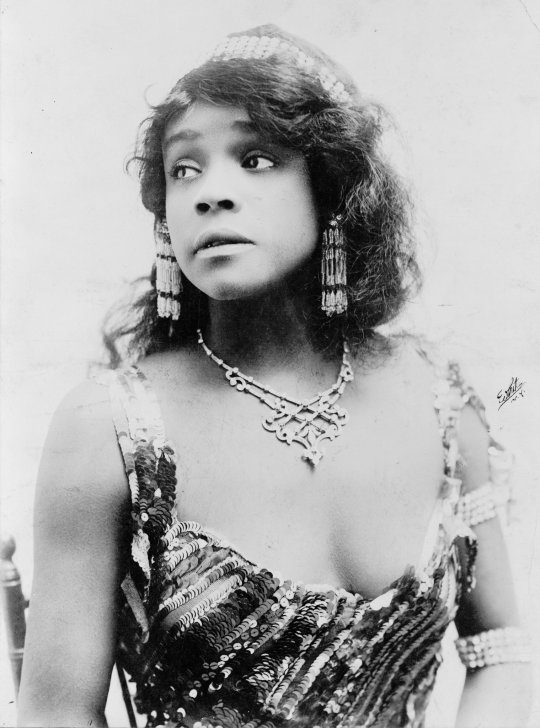
Portrait of American vaudeville performer, actress, singer, dancer and choreographer Aida Overton Walker. Photographed in 1912.
#women you should know#women actors#women musicians#black history is everybody's history#vintage photography
5 notes
·
View notes
Photo

Jun 21
Vaudeville actress, Aida Overton Walker, circa 1910.
1 note
·
View note
Photo
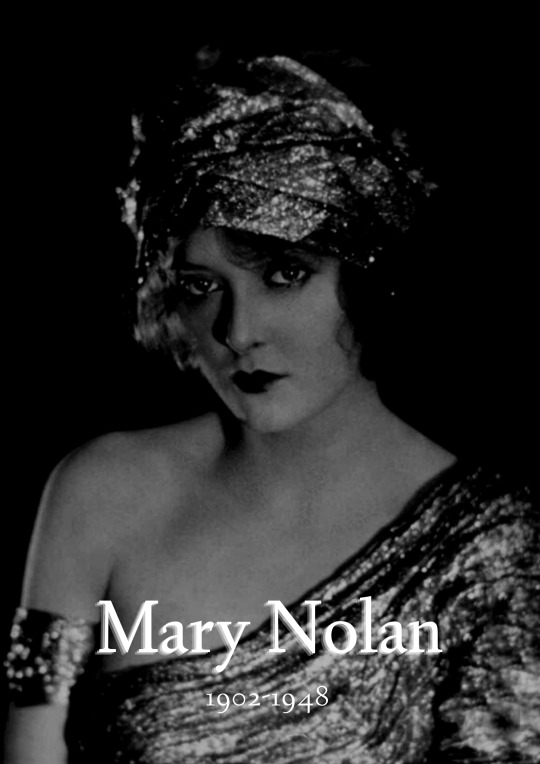

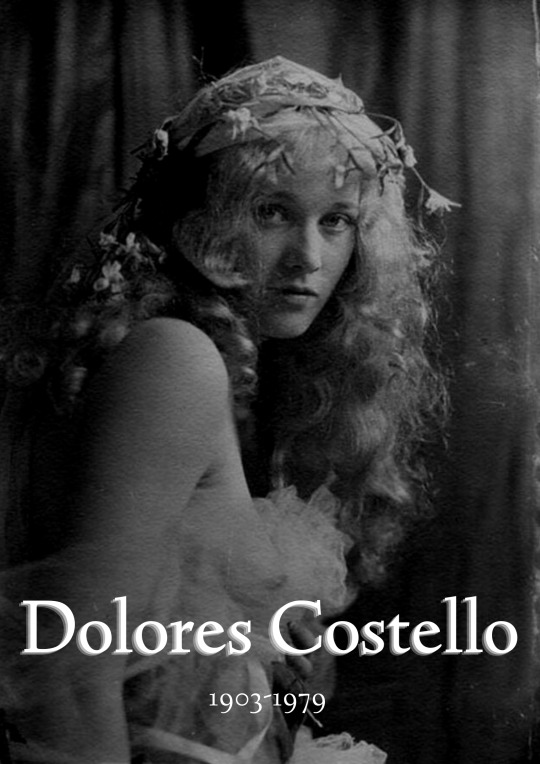

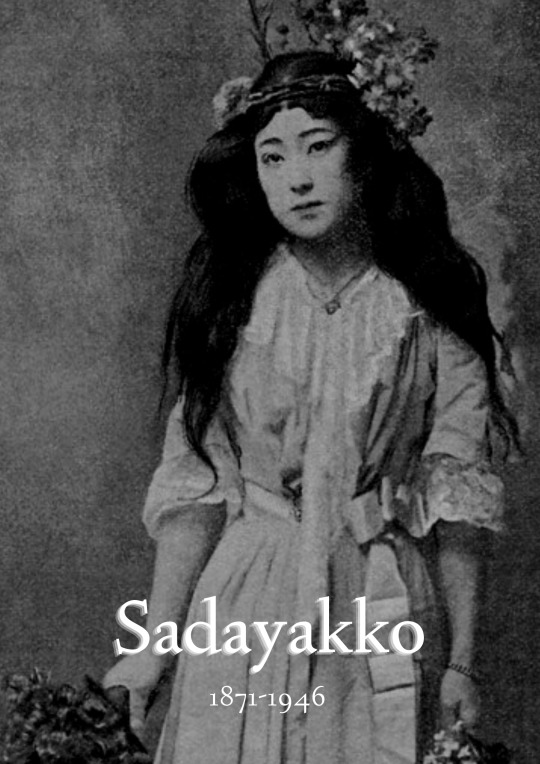


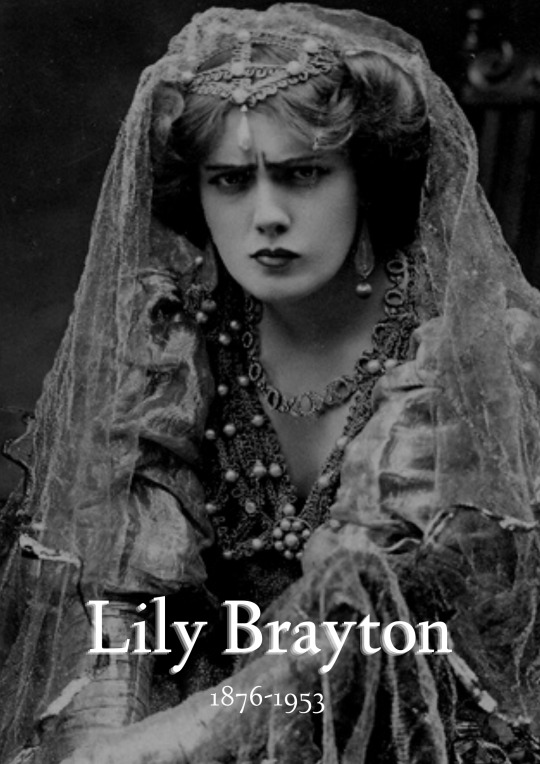


beautiful women of the past (imo) v
#women in history#mary nolan#mata hari#dolores costello#machiko kyo#sadayakko#zitkala-sa#hedy lamarr#lily brayton#aida overton walker#eleanor gutohrlein#karla gutohrlein#*#vintage#photography#ph#this is fun i might keep doing it
561 notes
·
View notes
Text

Aida Overton Walker (February 14, 1880 – October 11, 1914) billed as Ada Overton Walker and as “The Queen of the Cakewalk”, was a vaudeville performer, actress, singer, dancer, choreographer, and wife of vaudevillian George Walker. She appeared with her husband and his performing partner Bert Williams, and in groups such as Black Patti’s Troubadours. She was a solo dancer and choreographer for vaudeville shows such as Bob Cole, Joe Jordan, The Red Moon, and His Honor the Barber. She is known for her performance of the “Salome” dance at the Victoria Theatre. This was her response to the national “Salomania” craze that spread through the white vaudeville circuit.
She was born in New York City to Moses and Pauline. Her occupation was recorded as a waiter. Her name was spelled ‘Ada’, but this kind of misspelling is common in census records.
She gained an education and considerable musical training. At 15, she joined “Octoroons,” a Black touring group. She married George Walker (1899-1911).
She gained national attention in 1900, with her performance of “Miss Hannah from Savannah” in the show Sons of Ham. She was known for her work in musical theater. Her song and dance made her an instant hit with audiences at the time. She, Walker, and Williams worked together on such musicals as In Dahomey, In Abyssinia, and Bandanna Land. After two seasons in England touring with In Dahomey, the group returned to New York.
Her career and performances were praised by critics. Her husband fell ill and the partners closed In Dahomey in 1909. She left the stage for a time to care for her husband.
She joined the Smart Set Company. She began touring the vaudeville circuit as a solo act. She performed in His Honor the Barber with Smart Set Company. She performed as a male character in Lovie Dear, as well as in Bandanna Land, in which she took over her husband’s role.
Her husband died in 1911. In 1912, she went on tour with her show for 16 weeks, then returned to New York, where she performed as Salome at the Paradise Roof Garden on Broadway. She had continued performing two months before her death. #africanhistory365 #africanexcellence
0 notes
Text
My only problem with movie Medda is that the character is supposed to be based on Aida Overton Walker, an actual Black performer from the period
No issue with the actress or anything, it was just. A Choice.
0 notes
Text
Heather Agyepong
The artist is trying to convey the layers beneath Aida Overton Walker, The 'Queen of the Cakewalk''s work, and the complexities beneath the context of Cake Walk dancing as a whole. She is trying to show how Aida was praised by white audiences and charmed them with her dancing, yet she also faced the prejudice and struggles that all other African Americans faced - discrimination, pressure to be like "Caucasians", etc. She also conveys the message that Aida needs to give herself time and space to rest from expending energy always trying to please white crowds and cater to their likings.
Agyepong uses intense facial expressions combined with the "positive" luxurious outfits, riches, etc. to convey a double meaning. She creates a contrast between the material aspects of the photo and Aida's emotions and experiences felt through her expressions.
Yes, I consider these "good" photographs, as a story is told in each one. The artistic creativity, composition, and style of the photos is unique and beautiful to look at.
Yes, they each convey a message and story; however, you must look at each photo closely and for a bit of time to fully grasp Agyepong's intended meaning and depth to the photographs.
The effect of seeing several of her images together creates a contrast between different aspects of Aida's life (ex. charming audiences with her dancing, needing time to rest, feeling the need to be Caucasian, etc.). They tell a more complete story than just seeing one of these photos on its own.
The written information gives a lot of context about who the photos are of and what they are about. Without the information, you probably wouldn't know what specifically the photos are referring to and what time period they are referring to. I would perceive the photos in a much more general sense, rather than gaining the deeper and more specific understanding I do given the information.
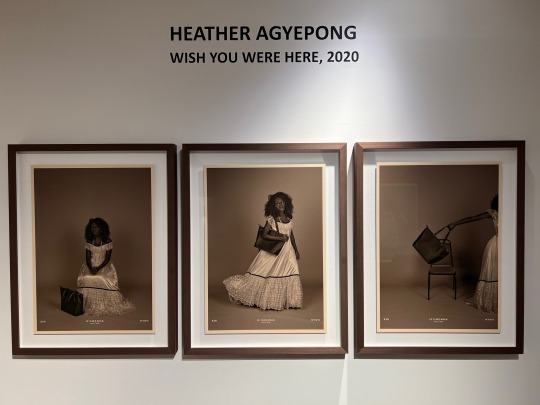
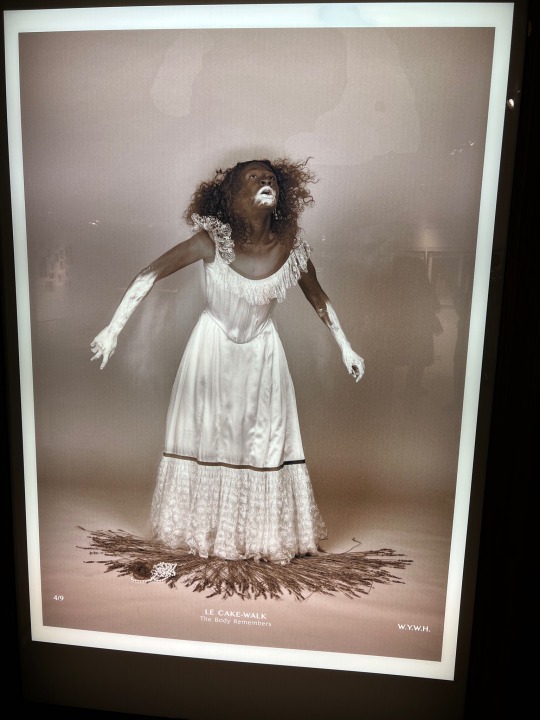



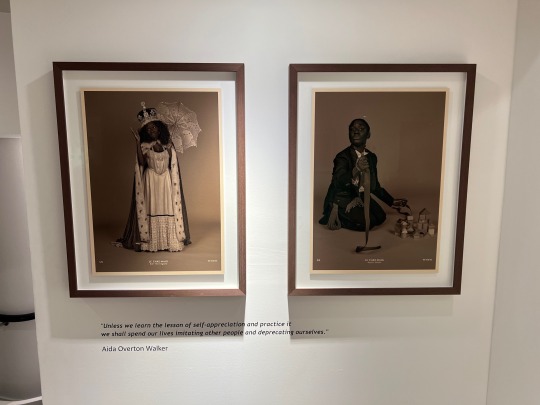

0 notes

